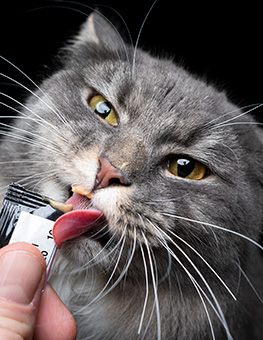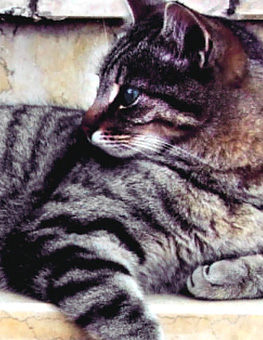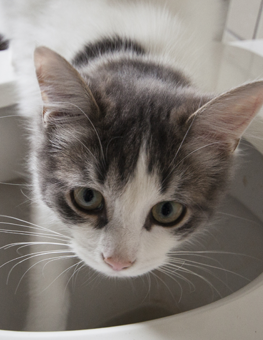Caring for Community Cats During the Cold Weather
Chances are, no matter where you live, you’ve probably seen a couple of outdoor cats roaming your neighborhood more than once.
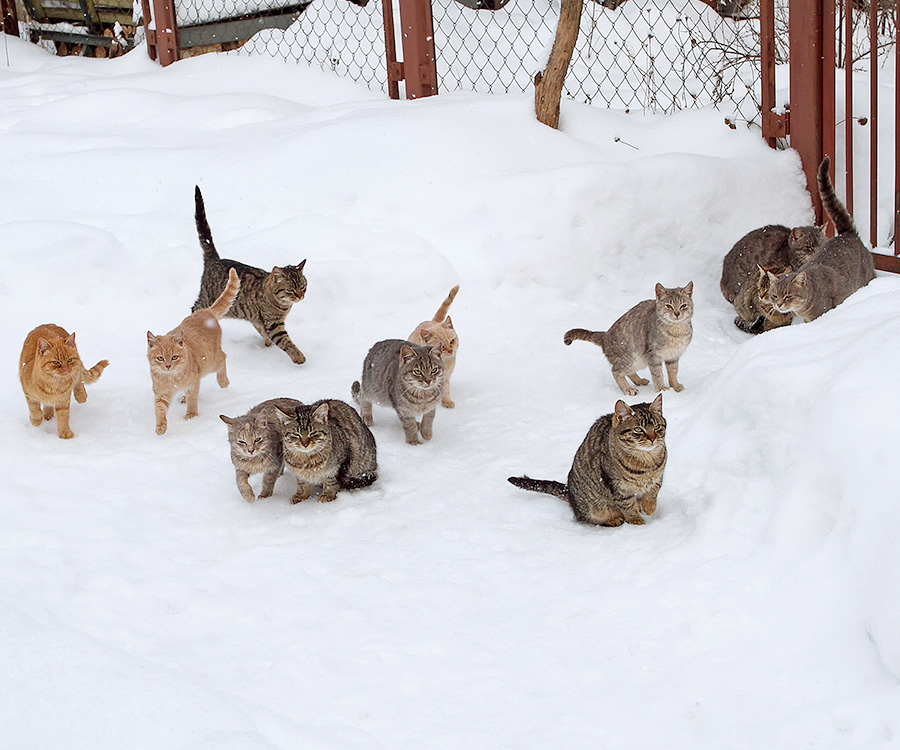

There are at least 32 million cats living outdoors, some feral and others stray.
Although there is little evidence and estimates greatly vary, according to one study (Rowan et al., 2019), there are at least 32 million cats living outdoors, with greater concentrations in urban areas.
Of these millions of cats, there are two types: those that are totally or partially unsocialized to people (sometimes called “feral” cats), and those who previously lived with humans indoors but have been lost or let go (typically referred to as “strays”). Both feral cats and stray cats can fall under the umbrella term, “community cats” – cats who are unowned and live outdoors and prefer it that way.
Engaging with Community Cats
It’s important to note, that engaging with community cats can vary on the local town level and you should be aware of what your local town ordinances are beforehand.
Community cats tend to take care of themselves, but they generally don’t mind a little help. Contrary to what most people assume, these cats are often clean and of a healthy weight. They know how to survive outdoors. They’ll be happy outside and show no interest in going indoors, whether it’s warm and sunny or below freezing.
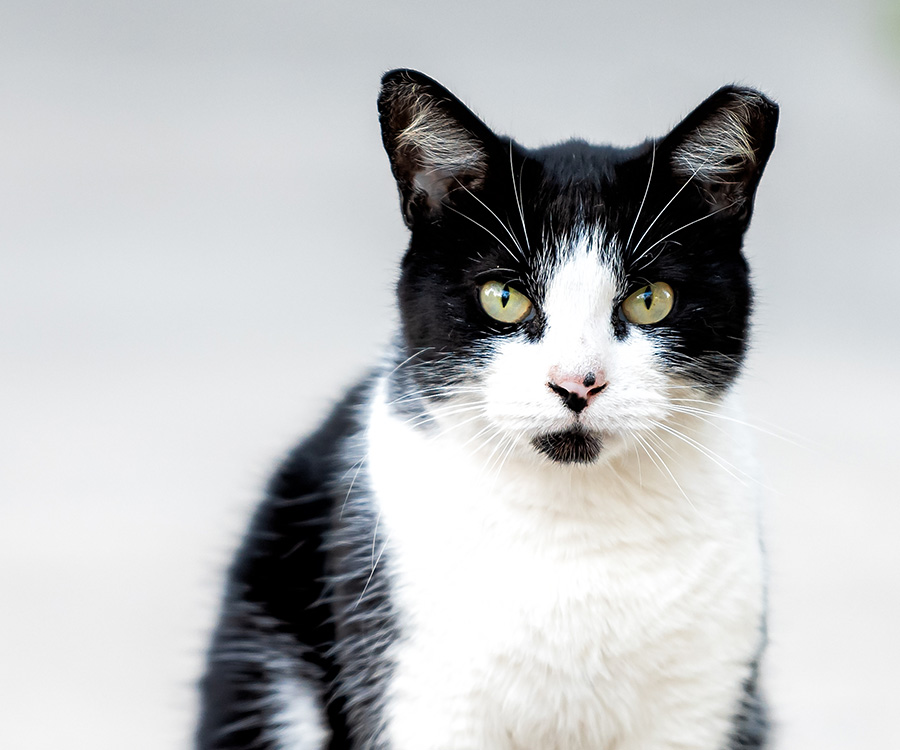

It’s best to let community cats live and go about their business, unless they are begging for help or attention.
Most of these cats cannot be safely handled and they may have a notch missing from their left ear called an “ear tip.” This lets cat rescuers and caretakers know that the cat has already been spayed or neutered and returned to their home.
If you do find a cat that seems dirty or unkempt, wants to get back inside, and seems to be begging you for help or attention, bring the cat indoors and contact your local shelter or rescue for advice – it may be a missing or abandoned pet who is not equipped to survive outside. Otherwise, it’s best to let our community cat friends live their lives and go about their business.
Tips for Helping in the Winter
But what about during the winter? We mentioned earlier that community cats generally don’t mind a little help. Well, they could use a little more help during the winter. Food is scarcer and they use up many precious calories keeping warm. If you would like to help community cats in your neighborhood during the winter, take a look at these tips:
- Stay put. As tempting as it may be to get the cats to warmth and safety, outdoor cats live outdoors for a reason. Do NOT take them to an animal shelter unless they are injured or sick or showing the signs that they may be an indoor cat, as outlined above. Cats who are used to free roaming the outdoors may become aggressive or shut down in cages and will not be adoptable.
- Provide extra calories. It’s great if you feed your outdoor cats year-round, but you may want to spend a little extra on the premium stuff during the winter. Dry kitten food provides extra calories and will not freeze. If you feed wet food, heat it up in the microwave first, if possible, or use heated electric bowls.

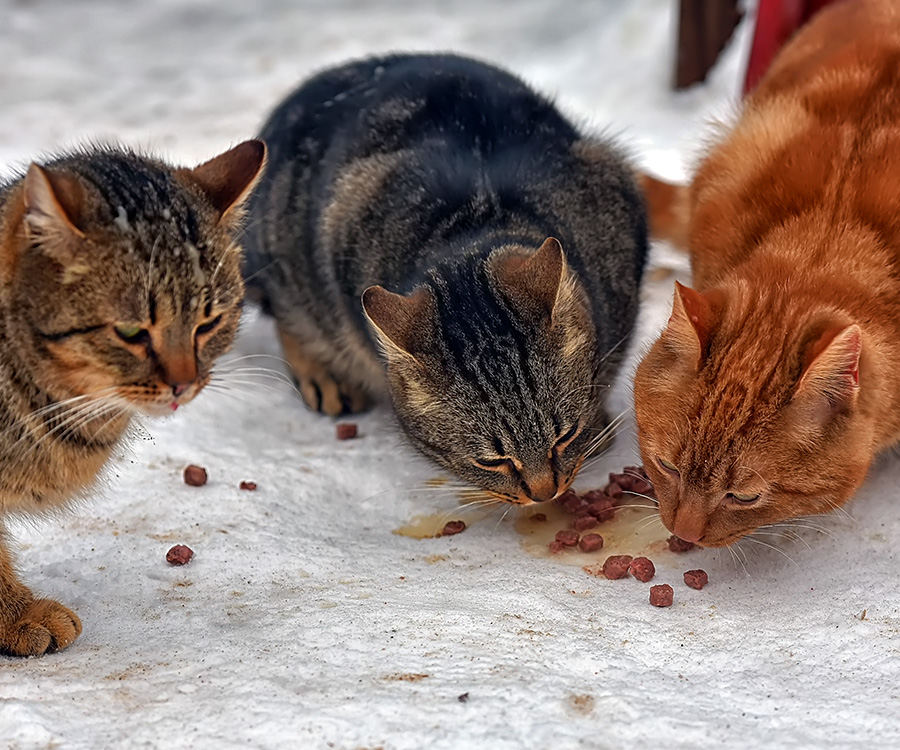
Community cats tend to take care of themselves, but they generally don’t mind a little help.
At minimum, place it in a sunny spot. Wet food is crucial for outdoor cats during the winter as it provides them with water when their usual source may be frozen.
- Trap, Neuter, Return (TNR). If you feed ‘em, you have to fix ‘em. Unless you’re equipped to care for the cat’s kittens… and her kittens’ kittens… and their kittens’ kittens… then you need to prevent reproduction from the source. Reach out to your local shelter or cat rescue organization to borrow humane traps and get information about free or low-cost spay/neuter for community cats. Most towns and cities have some sort of program to make it easy for you. It is not recommended to trap cats in freezing weather, so be proactive rather than reactive and get this done BEFORE winter starts.
- Build a shelter. Shelters for outdoor cats don’t have to be fancy. You can use a Styrofoam cooler, or a storage tote. They should be on the small side, to keep the heat in, and the door should only be big enough for a cat to squeeze through. Use straw, not hay or blankets, to insulate the inside of the shelter. Straw does not retain moisture, while hay or blankets will soak up any water like a sponge and render your shelter useless. Elevate the shelter slightly using bricks or similar building materials to keep the bottom off the cold, moist ground. You can entice the cats to check it out by leaving catnip or treats inside.
If you care for community cats, it’s also worth mentioning to be careful to choose a pet-friendly ice melt and to put away any harmful chemicals such as antifreeze. Finally, cats will sometimes hide inside wheel wells and even inside car engines during the winter. Bang on your hood and make a lot of noise before starting your engine!
References: Rowan, A.N.; Kartal, T.; Hadidian, J. (2019). Cat Demographics & Impact on Wildlife in the USA, the UK, Australia and New Zealand: Facts and Values. Journal of Applied Animal Ethics Research, vol. 2, pg 1-pg 31.





